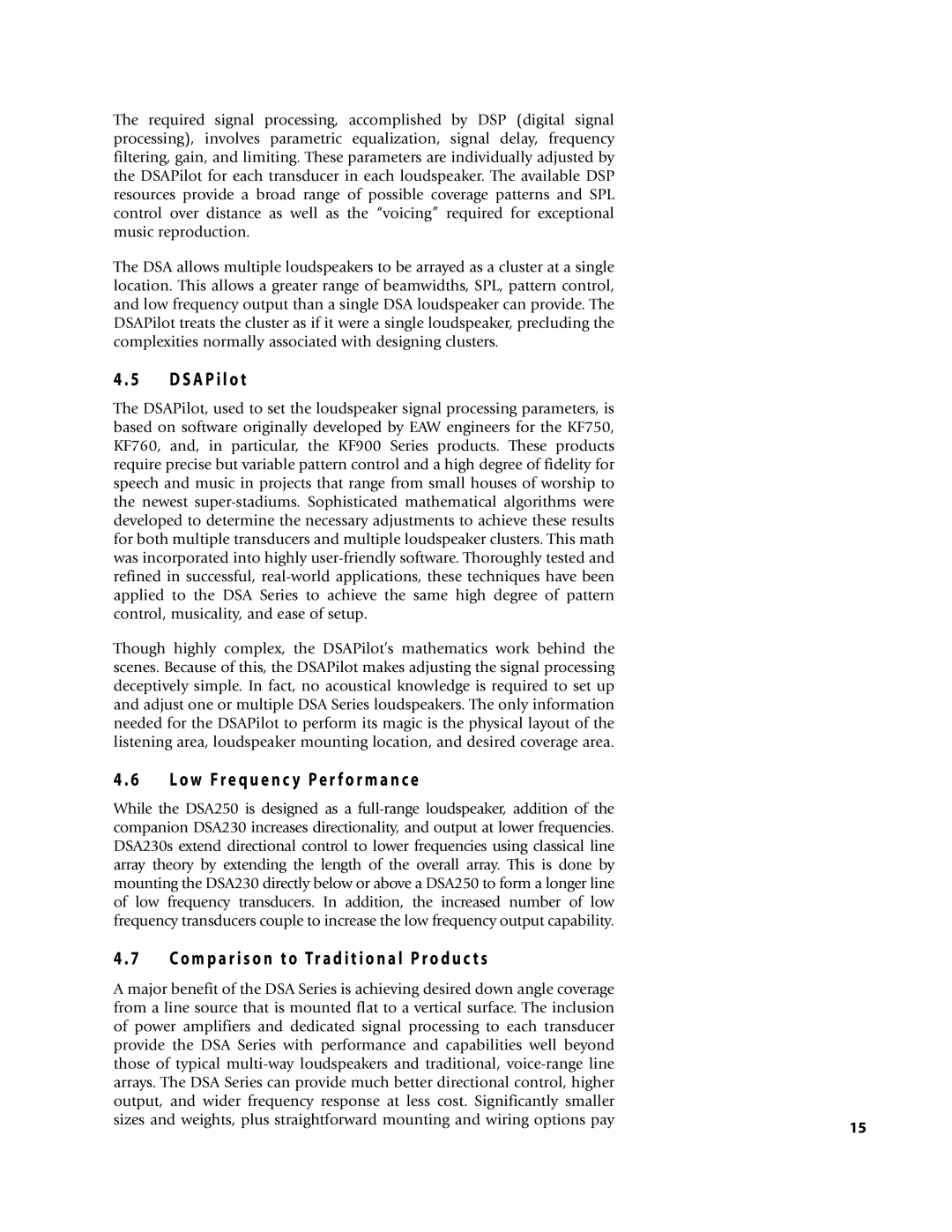The required signal processing, accomplished by DSP (digital signal processing), involves parametric equalization, signal delay, frequency filtering, gain, and limiting. These parameters are individually adjusted by the DSAPilot for each transducer in each loudspeaker. The available DSP resources provide a broad range of possible coverage patterns and SPL control over distance as well as the “voicing” required for exceptional music reproduction.
The DSA allows multiple loudspeakers to be arrayed as a cluster at a single location. This allows a greater range of beamwidths, SPL, pattern control, and low frequency output than a single DSA loudspeaker can provide. The DSAPilot treats the cluster as if it were a single loudspeaker, precluding the complexities normally associated with designing clusters.
4 . 5 D S A P i l o t
The DSAPilot, used to set the loudspeaker signal processing parameters, is based on software originally developed by EAW engineers for the KF750, KF760, and, in particular, the KF900 Series products. These products require precise but variable pattern control and a high degree of fidelity for speech and music in projects that range from small houses of worship to the newest
Though highly complex, the DSAPilot’s mathematics work behind the scenes. Because of this, the DSAPilot makes adjusting the signal processing deceptively simple. In fact, no acoustical knowledge is required to set up and adjust one or multiple DSA Series loudspeakers. The only information needed for the DSAPilot to perform its magic is the physical layout of the listening area, loudspeaker mounting location, and desired coverage area.
4 . 6 L o w Fr e q u e n c y Pe r f o r m a n c e
While the DSA250 is designed as a
4 . 7 Co m p a r i s o n t o Tr a d i t i o n a l P r o d u c t s
A major benefit of the DSA Series is achieving desired down angle coverage |
|
from a line source that is mounted flat to a vertical surface. The inclusion |
|
of power amplifiers and dedicated signal processing to each transducer |
|
provide the DSA Series with performance and capabilities well beyond |
|
those of typical |
|
arrays. The DSA Series can provide much better directional control, higher |
|
output, and wider frequency response at less cost. Significantly smaller |
|
sizes and weights, plus straightforward mounting and wiring options pay | 15 |
|
